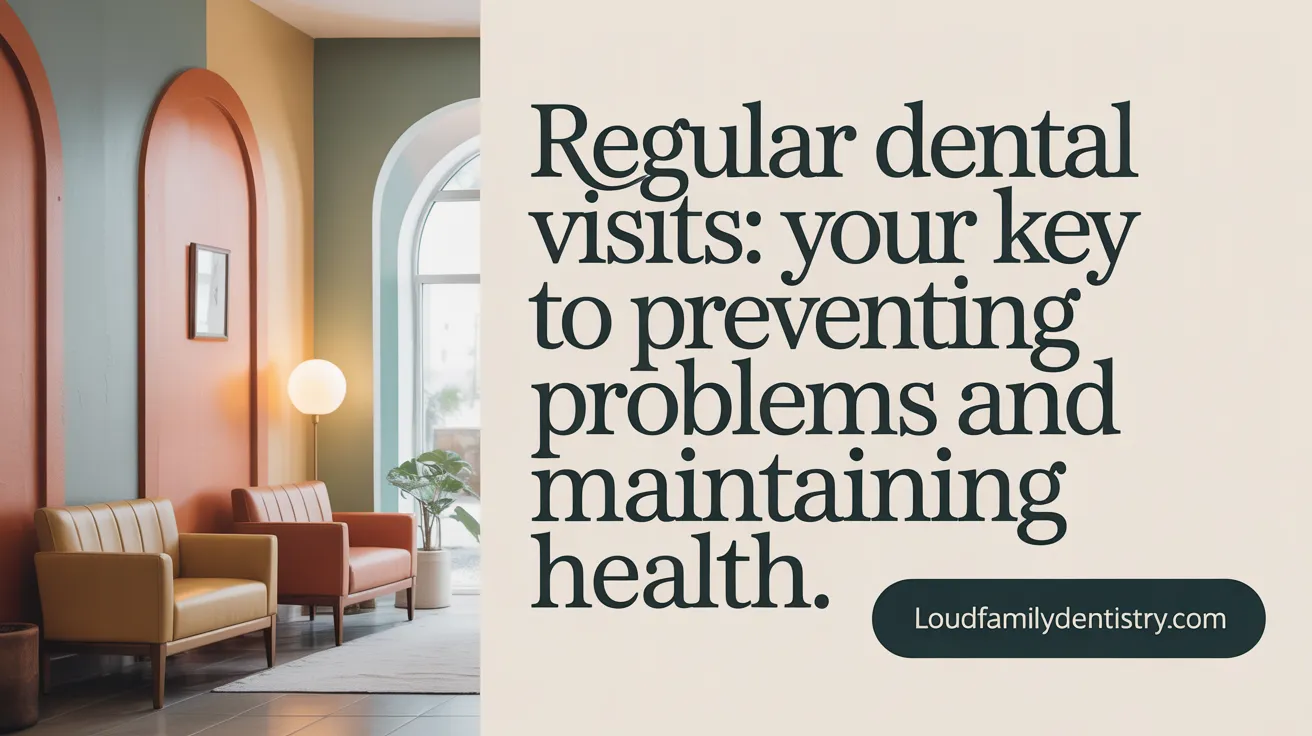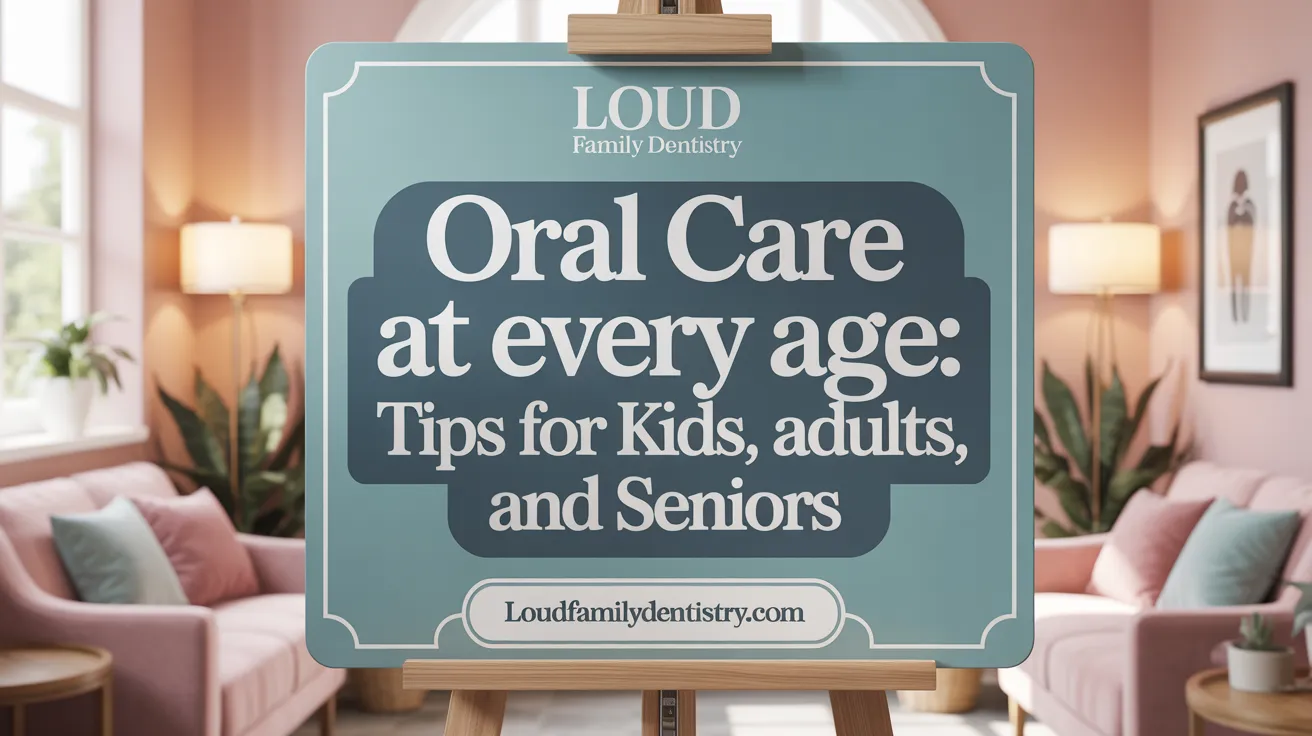Why Prioritize Preventive Oral Health?
Preventive oral health is the foundation for maintaining a healthy smile and overall well-being throughout life. By adopting effective daily habits, seeking timely professional care, and embracing supportive lifestyle choices, individuals can reduce the risk of cavities, gum disease, and costly dental procedures. Moreover, prevention fosters better systemic health, linking oral care to diseases such as heart disease and diabetes. This article explores the most effective strategies to sustain oral health from childhood through older adulthood, emphasizing the critical role of both individual commitment and community efforts.
Mastering Daily Oral Hygiene: Brushing, Flossing, and Beyond

Proper brushing techniques
Effective oral hygiene starts with the correct brushing method. Use a soft-bristled toothbrush and fluoride toothpaste, positioning the brush at a 45-degree angle toward the gumline. Gently move the brush in small circular motions, ensuring all surfaces of each tooth—front, back, and chewing surfaces—are thoroughly cleaned. Brushing twice daily for at least two minutes helps remove plaque, a sticky film of bacteria that can lead to cavities and gum disease.
Effective flossing methods
Flossing is essential for cleaning between teeth where a toothbrush can't reach. Use about 18 inches of dental floss, winding most of it around your middle fingers. Gently slide the floss in a 'C' shape along the side of each tooth, moving it up and down under the gumline. Be gentle to avoid damaging gums, and do this daily to remove plaque and food particles, significantly reducing the risk of gingivitis and more advanced gum disease.
Role of tongue cleaning
Cleaning your tongue helps reduce bacteria that cause bad breath and oral infections. Use a toothbrush or a tongue scraper to gently cleanse the surface of your tongue each morning and evening. This simple step not only freshens your breath but also contributes to overall oral hygiene.
Use of mouthwash
Incorporating an antimicrobial, alcohol-free mouthwash into your routine can further reduce harmful bacteria and plaque buildup. Swish the mouthwash for 30 seconds to one minute after brushing and flossing, and avoid eating or drinking for at least 30 minutes afterward to maximize its benefits.
Toothbrush maintenance
To keep your toothbrush effective, replace it every three to four months or sooner if the bristles become frayed. Rinse your toothbrush thoroughly after use and store it upright to air-dry. Avoid sharing brushes to prevent bacterial transmission and bacterial growth on the brush.
Diet and tobacco impacts on oral hygiene
A balanced diet low in sugary and acidic foods supports healthy teeth and gums. Limit sweets and beverages that can promote decay, and eat plenty of fruits, vegetables, and dairy products that provide essential nutrients. Avoid tobacco products, as smoking and smokeless tobacco are leading causes of gum disease and oral cancer, and can stain teeth, impair healing, and worsen oral infections.
Maintaining a consistent daily routine that includes proper brushing, effective flossing, tongue cleaning, and use of mouthwash, complemented by regular dental visits and a healthy lifestyle, is the foundation for lifelong oral health. These practices not only keep your teeth and gums healthy but also support overall well-being.
The Critical Role of Routine Dental Visits and Professional Cleanings

Why are routine dental visits and professional cleanings important for preventing dental problems?
Routine dental visits and professional cleanings play a vital role in maintaining oral health by enabling early detection and intervention of dental issues. During these visits, dentists examine teeth, gums, and oral tissues to identify any signs of cavities, gum disease, or even oral cancer at an early stage when they are most treatable.
Professional cleanings remove plaque, tartar, and bacteria that regular brushing and flossing often cannot fully eliminate, especially in hard-to-reach areas or when plaque has hardened into calculus. Eliminating these substances reduces the chances of developing decay and periodontal disease.
Moreover, these visits allow dental professionals to provide personalized advice on effective oral hygiene practices, diet, and lifestyle habits. They can also apply preventive measures such as fluoride treatments or sealants that strengthen teeth against cavities.
Early detection through routine checkups also benefits systemic health, as poor oral health links to increased risks of heart disease, stroke, and other health conditions. Regular dental care thus supports overall well-being and can prevent complex, costly procedures later.
Scheduling visits approximately every six months ensures that problems are caught early, minimizing pain, health risks, and expenses. Consistent professional care is a cornerstone of a lifelong, healthy smile and improved overall health.
Preventive Treatments: Fluoride and Dental Sealants for Cavity Protection

How do preventive treatments like fluoride and dental sealants reduce the risk of cavities?
Preventive dental treatments such as fluoride and dental sealants play a vital role in protecting teeth from decay and cavities. Fluoride works by enhancing the mineral content of tooth enamel, making it stronger and more resistant to acid attacks caused by bacteria in plaque and sugary foods. This process, known as remineralization, helps repair early signs of decay before cavities form and can even reverse minor enamel damage.
Dental sealants are thin plastic coatings applied to the chewing surfaces of molars and premolars. They effectively fill in the deep pits and fissures where plaque and food debris tend to accumulate. By creating a smooth barrier, sealants prevent bacteria and sugars from settling into these hard-to-clean areas, significantly reducing the chance of cavity development.
Some dental sealants are also designed to release fluoride over time. This additional fluoride supply continues to strengthen the enamel, promoting an ongoing process of remineralization and further inhibiting bacteria growth. When fluoride and sealants are used together, especially in children and teenagers who are more prone to cavities, they provide a dual mode of defense—chemical strengthening of enamel and physical barrier protection.
Who can benefit from these treatments?
These preventive measures are particularly beneficial for children, adolescents, and adults at higher risk of cavities due to factors like deep grooves in molars, poor oral hygiene, or a history of decay. They are also suited for individuals with limited access to frequent dental care or those with conditions that increase susceptibility to dental caries. More information on preventive dental care benefits for all ages is available.
Reducing cavity risk with combined strategies
Incorporating fluoride treatments and dental sealants into regular dental care routines can drastically decrease the incidence of cavities. Public health initiatives often include community water fluoridation, fluoride varnish applications, and school sealant programs to maximize cavity prevention in populations. Regular dental visits allow professionals to assess the condition of sealants and reinforce fluoride therapies, maintaining optimal protection over time. For more on the importance of routine dental visits and professional cleanings, see these resources.
In conclusion, these preventive treatments provide a scientifically supported, cost-effective strategy to safeguard teeth from decay, promote oral health, and support long-term dental integrity. Learn more about preventive dentistry and how it protects your smile for life.
Nutrition and Lifestyle: Supporting Oral Health Through Diet and Habits
Maintaining a healthy mouth is strongly influenced by everyday diet and lifestyle choices. Eating a well-balanced diet rich in nutrients like calcium, vitamin D, and phosphates helps strengthen the enamel and supports the overall health of teeth and gums. Foods such as dairy products—milk, cheese, and yogurt—provide these essential minerals and help remineralize teeth, making them more resistant to decay.
One of the most critical dietary considerations is limiting the intake of free sugars, especially sucrose, which should be kept below 10% of daily calories. Sugary foods and drinks serve as fuel for bacteria in the mouth, producing acids that erode enamel and lead to cavities. Instead, consuming crunchy fruits and vegetables like apples and carrots can stimulate saliva production, which naturally neutralizes acids and washes away food debris.
In addition to being low in sugar, dairy products, nuts, and foods high in calcium and phosphorus provide protective benefits for teeth. Drinking plenty of fluoridated water also plays a vital role in preventing decay by enhancing enamel strength and inhibiting bacterial growth.
Lifestyle factors such as tobacco and alcohol consumption significantly impact oral health. Tobacco increases the risk of gum disease and oral cancers, while excessive alcohol intake can lead to dry mouth and other oral problems. Maintaining good hydration supports saliva flow, a natural defense mechanism against tooth decay.
Adopting healthy habits like regular brushing at least twice a day, reducing snacking between meals, and avoiding harmful substances can sustain oral health. These practices, combined with a balanced diet and avoiding detrimental habits, contribute to a resilient, healthy smile that lasts a lifetime.
Tailoring Oral Care Across the Lifespan: From Childhood to Older Adulthood

How can oral health be maintained effectively at different life stages, such as in children, pregnant women, and older adults?
Maintaining effective oral health throughout life requires specific practices suited to each stage, combined with regular professional care. In childhood, early dental visits are crucial—usually starting when the first tooth erupts—and help to instill good habits. Parents should supervise brushing until children develop good skills, using fluoride toothpaste and encouraging healthy eating habits to prevent cavities. Dental sealants and fluoride applications are preventive measures recommended for children to protect molars from decay.
During pregnancy, hormonal fluctuations can increase gum sensitivity and inflammation, making it essential for women to maintain meticulous oral hygiene. Regular dental checkups are advised to monitor and treat gingivitis early, as poor gum health has been linked to pregnancy complications like preterm birth and low birth weight. A balanced diet, limited sugary foods, and avoiding tobacco also support maternal and fetal health.
Older adults face different challenges, including increased susceptibility to dry mouth, receding gums, and difficulties with brushing and flossing due to physical limitations. It is important for seniors to adapt their oral hygiene routines, perhaps using electric toothbrushes, larger-handled brushes, or assistive devices. Managing dry mouth with hydration, saliva stimulants, or artificial saliva can reduce decay risks. Denture care, regular dental visits, and addressing gum disease or decay early help preserve teeth and overall health.
Across all stages, the consistent adoption of good oral hygiene habits—such as brushing twice daily with fluoride toothpaste, daily flossing, limiting sugary intake, and avoiding harmful behaviors like tobacco use—is vital. Regular dental check-ups enable early detection and management of issues, supporting lifelong oral health and overall well-being.
Linking Oral Health with Overall Wellbeing and Public Health Strategies

Why are preventive oral health strategies essential for maintaining dental health over a lifetime?
Preventive oral health strategies are vital because they help avoid the development of serious dental issues like cavities and gum disease before symptoms appear. Consistent daily habits such as brushing with fluoride toothpaste, flossing, and attending regular dental checkups promote lifelong oral wellness and reduce the need for invasive, costly treatments later. Community programs, including sealant applications and educational outreach, especially benefit vulnerable groups such as children and low-income populations. These measures support not only the preservation of natural teeth and improved speech, chewing, and appearance but also reduce health risks associated with oral diseases, like cardiovascular problems and diabetes. When community-wide preventive efforts are scaled up, they lead to healthier populations with fewer disparities and lower healthcare costs, creating long-term social and economic benefits.
What is the connection between oral health and overall health, and why is maintaining oral health important for long-term wellbeing?
The link between oral health and overall health is established through shared biological pathways involving inflammation, immune response, and microbial balance. Poor oral hygiene, especially periodontal disease, has been associated with chronic conditions such as heart disease, stroke, Alzheimer’s, and certain cancers. Managing oral health effectively can reduce systemic inflammation, improve disease control (e.g., diabetes), and lower the risk of serious health events. Additionally, the mouth serves as an early indicator of broader health issues — problems like persistent sores or infections may signal underlying systemic diseases. Integrating oral health into general healthcare strategies ensures a holistic approach that enhances long-term quality of life, reduces healthcare costs, and supports overall wellbeing.
How do public health initiatives and community-based strategies contribute to improving oral health outcomes?
Public health programs and community strategies play a crucial role by expanding access to preventive services such as community water fluoridation, school-based dental programs, and mobile clinics. These initiatives help reach populations with limited resources or awareness, reducing disparities across socioeconomic and geographic lines. Evidence-based policies, like mandatory water fluoridation, save billions in healthcare costs by decreasing the need for fillings, crowns, and extractions. Community outreach educates populations on proper oral hygiene, healthy diets, and tobacco cessation, fostering healthier behaviors. Partnerships with schools, healthcare providers, and local governments create sustainable systems that facilitate early diagnosis and routine care. Ultimately, these combined efforts improve oral health equity, reduce disease burden, and promote healthier communities.
| Topic | Description | Additional Details |
|---|---|---|
| Systemic health connections | Oral diseases linked to heart, diabetes, and Alzheimer’s | Chronic inflammation and microbial spread impact overall health |
| Community water fluoridation | Widely supported preventive measure | Cost-effective, reduces cavities, and lowers treatment expenses |
| Public health programs | School sealants, education, mobile clinics | Expand reach to underserved populations |
| Reducing disparities | Focus on equity through accessible services | Address social determinants and cultural barriers |
| Benefits of prevention | Reduced long-term costs and health risks | Promotes overall wellbeing and economic stability |
Adopting preventive strategies and integrating oral health with broader health initiatives are essential for fostering healthier, more equitable societies. This comprehensive approach ensures that people of all ages and backgrounds can enjoy the benefits of good oral and overall health well into the future.
Sustaining Your Healthy Smile for Life
Maintaining a healthy smile is a lifelong journey that integrates daily personal care, regular professional support, mindful nutrition, and an understanding of oral health’s broader impact on overall well-being. By mastering effective brushing and flossing techniques, participating in routine dental visits, utilizing preventive treatments like fluoride and sealants, and adopting healthy lifestyle habits tailored to each life stage, individuals can significantly reduce the risk of dental disease. Furthermore, community initiatives and public health strategies play a critical role in ensuring equitable access to care, promoting prevention, and addressing oral health disparities. Ultimately, a proactive approach combining personal responsibility and supportive community measures helps preserve natural teeth, enhance quality of life, and contribute to total body health—ensuring your smile remains bright, resilient, and healthy for life.
